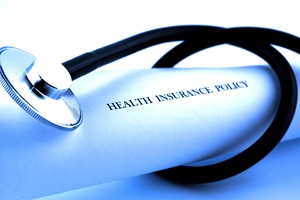
With the employer mandate portion of the Affordable Care Act slated to go into effect for many businesses in the new year, companies that offer employee benefits are taking a hard look at the type of coverage they provide to their workers. But based on a recent study, they may not be using the type of objective analysis that can give them a better picture of plan quality.
Less than 10 percent of employers that offer health insurance use objective data and ratings that assess the overall caliber of plan offerings, according to newly released details from the Robert Wood Johnson Foundation. Funded by the New Jersey-based philanthropic organization and conducted by the Associated Press-NORC Center for Public Affairs Research, the study also showed that the remaining 90 percent are unfamiliar with these objective analysis sources.
Anne Weiss, who serves as RWJF's leader for health care value analysis, indicated that in the past 10 years, a variety of systems have developed that give employers a clearer picture of the extent to which their employee benefits provide reliable coverage and services to their workers. Based on the survey's results, though, it's clear that many business owners and human resources professionals are either not aware of them or don't find them to be particularly useful.
"This poll highlights the fact that there is still a lot of work to be done to educate employers on how to get the most bang for their buck," Weiss.
The most widely used ratings systems that employers take advantage of to gauge plan quality includes the Health Care Effectiveness Data and Information Set Scores, which is owned by the National Committee for Quality Assurance, and eValue8 data, offered by the National Business Coalition on Health.
Quality ratings important component of health plan decisions
Evident from the respondents' answers, business owners think that quality ratings are worthwhile. Approximately 60 percent of participants said that they served as an important indicator of what plan to choose. But just 4 percent of employers surveyed said that they used HEDIS Scores. Additionally, about two-thirds of respondents didn't know what it was. The same went for Consumer Assessment of Health Care Providers and Systems data, as 4 percent said that this was the ratings system their business used, while 64 percent were unfamiliar with it. The least known source was eValue8. Just 1 percent of organizations said they used it.
Roughly 1 in 4 organizations uses other sources to evaluate health plan quality. More specifically, the RWFJ-funded survey found that 15 percent of businesses enlisted the help of consultants, 2 percent used other businesses' references or suggestions and another 2 percent took advantage of feedback provided by workers.
Whether out of concern for their workers or for compliance-related purposes, employers are almost universally committed to providing health care benefits to their workers. More than 95 percent of respondents in a separate poll said they were "very likely" to offer coverage in 2016, up from 77 percent when the survey was done last year, according to the Private Exchange Evaluation Collaborative.





